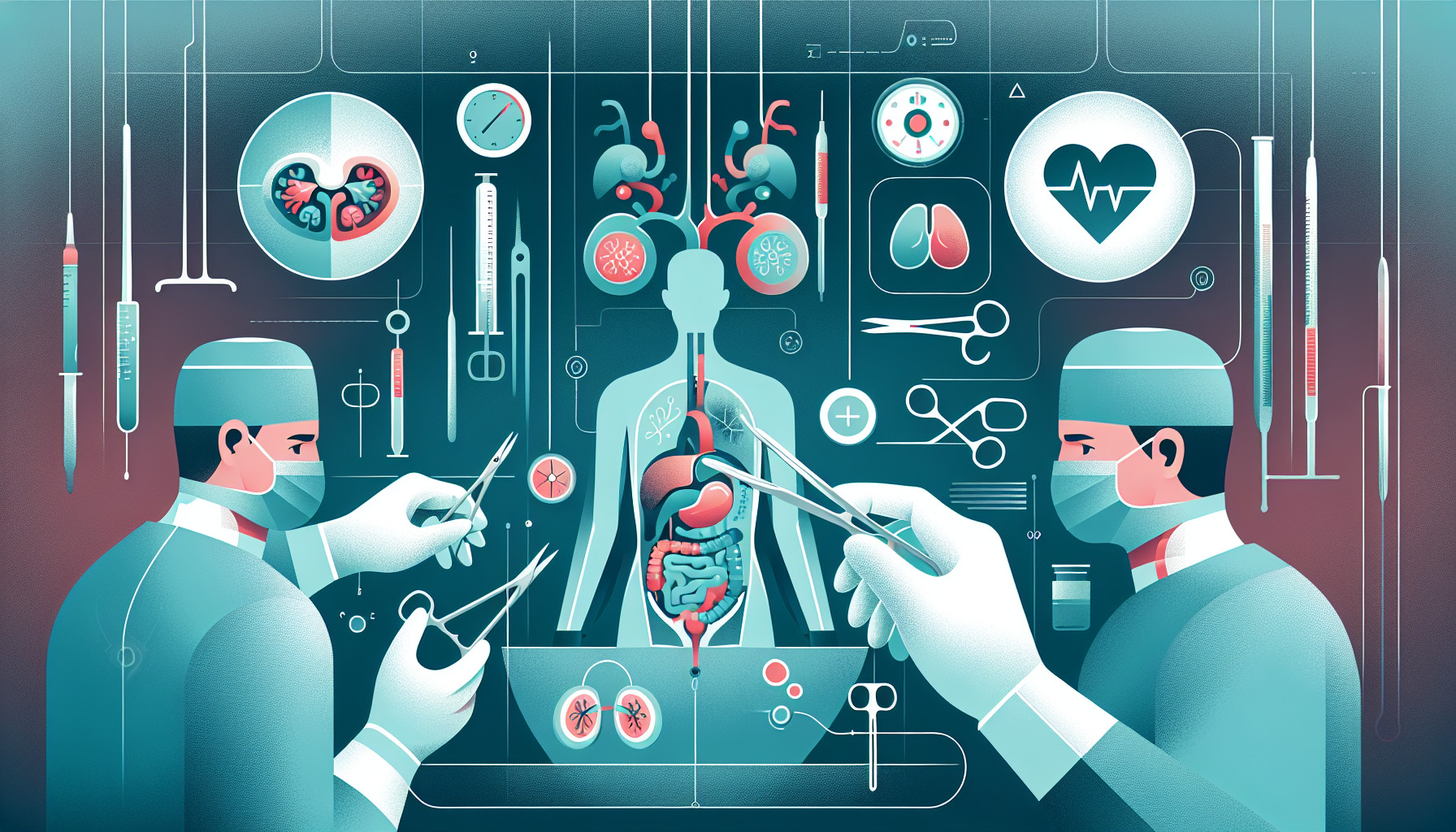Our Summary
This research paper is all about the use of a special tool called Indocyanine Green Fluorescence (ICG-F) in children’s surgeries. This tool helps surgeons to see better during operations, making the surgery safer and more effective. The study was conducted by a group of 15 children’s surgeons from 9 different countries who reviewed 100 articles on the subject, discussed their findings, and then voted on specific statements about the use of ICG-F. They agreed on things like how safe it is, when it should be used, how much should be used, and what kind of surgeries it is best for. However, they also highlighted that more research is needed to better understand its potential and safety. This study serves as a guide for healthcare professionals on how to use ICG-F in children’s surgeries.
FAQs
- What is Indocyanine Green Fluorescence (ICG-F) and how does it help in children’s surgeries?
- What were the main findings of the study conducted by the group of children’s surgeons regarding the use of ICG-F?
- What further research is needed on the use of ICG-F in pediatric surgical procedures?
Doctor’s Tip
A helpful tip that a doctor might tell a patient about pediatric urologic reconstruction is to make sure to follow all post-operative care instructions closely, including taking any prescribed medications, attending follow-up appointments, and avoiding strenuous activities as recommended. It is important to communicate any concerns or changes in symptoms to the healthcare provider promptly to ensure proper healing and optimal outcomes.
Suitable For
Patients who are typically recommended for pediatric urologic reconstruction include those with congenital anomalies of the urinary tract such as hypospadias, vesicoureteral reflux, bladder exstrophy, and posterior urethral valves. Other conditions that may warrant pediatric urologic reconstruction include neurogenic bladder dysfunction, ureteropelvic junction obstruction, and pediatric urologic cancers. These patients may require surgical intervention to correct anatomical abnormalities, improve urinary function, and prevent long-term complications. The use of ICG-F in these surgeries can help surgeons visualize blood flow, lymphatic drainage, and tissue perfusion, leading to better outcomes for these pediatric patients.
Timeline
Before pediatric urologic reconstruction:
- Patient is diagnosed with a urologic condition that requires surgical intervention
- Patient undergoes various preoperative tests and evaluations to assess their condition and overall health
- Surgical team discusses the procedure with the patient and their family, explaining the risks and benefits of the surgery
- Surgery date is scheduled and patient and family are informed about preoperative instructions and preparations
During pediatric urologic reconstruction:
- Surgeons use Indocyanine Green Fluorescence (ICG-F) to enhance visualization of the surgical field and improve accuracy during the procedure
- The tool helps surgeons to identify blood vessels, lymphatic vessels, and tissue perfusion in real-time, allowing for more precise surgical techniques
- The surgery is performed according to the surgical plan, with the use of ICG-F aiding in successful completion of the reconstruction
- Surgeons monitor the patient closely for any complications or adverse reactions during and after the surgery
After pediatric urologic reconstruction:
- Patient is taken to the recovery room for postoperative care and monitoring
- Surgeons provide instructions to the patient and family on postoperative care, including wound care, pain management, and follow-up appointments
- Patient may stay in the hospital for a period of time for observation and pain management
- Follow-up appointments are scheduled to monitor the patient’s healing progress and address any concerns or complications that may arise
Overall, the use of ICG-F in pediatric urologic reconstruction has the potential to improve surgical outcomes and patient safety. Further research and studies are needed to fully understand the benefits and limitations of this tool in pediatric surgeries.
What to Ask Your Doctor
What is Indocyanine Green Fluorescence (ICG-F) and how does it work in pediatric urologic reconstruction surgeries?
What are the potential benefits of using ICG-F in pediatric urologic reconstruction surgeries?
Are there any potential risks or side effects associated with the use of ICG-F in pediatric urologic reconstruction surgeries?
How experienced are you in using ICG-F in pediatric urologic reconstruction surgeries?
How will ICG-F be incorporated into my child’s surgical plan and what specific role will it play in the surgery?
Are there any specific criteria that need to be met in order for my child to be a candidate for ICG-F in their urologic reconstruction surgery?
What type of follow-up care will be needed after the surgery, particularly in relation to the use of ICG-F?
Are there any alternative options to using ICG-F in my child’s urologic reconstruction surgery, and if so, what are the pros and cons of each option?
What is the success rate of using ICG-F in pediatric urologic reconstruction surgeries based on your experience and the current research available?
Are there any ongoing clinical trials or research studies related to the use of ICG-F in pediatric urologic reconstruction surgeries that my child may be eligible for?
Reference
Authors: Szavay PO, Bondoc A, Esposito C, Goldstein SD, Harms M, Kowalewski G, Lautz TB, Lopez M, Pachl M, Pandya S, Piché N, Rothenberg SS, Ruiterkamp J, Scholz S, Zendejas B, Rentea RM. Journal: J Pediatr Surg. 2024 Nov;59(11):161657. doi: 10.1016/j.jpedsurg.2024.07.042. Epub 2024 Jul 30. PMID: 39179501
